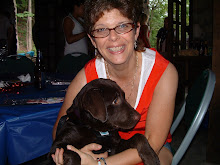Wednesday, November 18, 2009
Cornell Notes Revisited
Take a moment and look at the powerpoint attached below. I would be interested in any thoughts, comments etc. that you have.
http://www.sdcoe.k12.ca.us/lret/avid/resources/Cornell_Notes-presentation.ppt
Thanks!
Becky
Monday, November 9, 2009
So much information, so little time..
... and as much as I would like to read each and every one of those books ( I currently have post-its in at least 3 or 4) , who's got the time? or for that matter the money to purchase all of them?
The following may be a partial solution:
On the BOCES website (http://www.ocmboces.org/) Click on Instructional Support Services and you will find information on how to access the ASCD Collection of books.
(http://www.ocmboces.org/teacherpage.cfm?teacher=987) Once on this page it is worth it to listen to the 2 minutes of instruction ( Just Click! )to understand how to access either entire books or only topic related resources.
I find the topic related resources invaluable as they allow me to access what I want to know without having to read or skim through multiple texts. I can find out what several researchers have to say about a topic without having to read the whole book. Topics such as formative assessment, differentiating instruction, classroom management and curriculum design are addressed by researchers that include Carol Tomlinson, Robert Marzano, Grant Wiggins, Jay McTighe and Doug Reeves among others. These resources are up to date, and by best practice authors, so I know that what I am reading will be consistent with our goals as a district.
The list of books available is by no means exhaustive, but certainly represents a good cross section of what's current and available.
Check out http://www.gale.cengage.com/pdf/facts/GML13209GVRL_ASCD_Bundle.pdf for a quick description of the books available.
A final note - ASCD is a great organization with a focus on programs and literature for professional development. We do have a local chapter here and all are encouraged to join and participate. Our next event will be a "Technology Fair" where participating districts will show off what teachers are doing with technology. At this time this event is scheduled for January 20, 2010 at West Genessee High School. If you would like more information, please let me know.
Happy reading.
Becky
Thursday, October 8, 2009
Thoughts about using questions more effectively
As teachers we ask questions all the time . Research suggests that the questions we ask the most often require students to simply give back a discreet bit of information, a fact or detail. These are questions that would fall at the "knowledge" level of Bloom's taxonomy. By changing how we frame a question, it is possible to use questioning as a way to further higher level thinking among our students and as a way to assess their understanding at that higher level.
Below are some question stems that are organized by their level in Bloom's Taxonomy (old version). For our purposes, I have only listed the three highest levels of Bloom's. Think about incorporating these question types as you plan your lessons and units. Think about how you could use questioning as formative assessment.
Analysis
- subdividing something to show how it is put together
- finding the underlying structure of a communication
- identifying motives
- separation of a whole into component parts
- what are the parts or features of ...?
- classify ... according to ...
- outline/diagram ...
- how does ... compare/contrast with ...?
- what evidence can you list for ...?
Synthesis
- creating a unique, original product that may be in verbal form or may be a physical object
- combination of ideas to form a new whole
- what would you predict/infer from ...?
- what ideas can you add to ...?
- how would you create/design a new ...?
- what might happen if you combined ...?
- what solutions would you suggest for ...?
Evaluation
- making value decisions about issues
- resolving controversies or differences of opinion
- development of opinions, judgements or decisions
- do you agree that ...?
- what do you think about ...?
- what is the most important ...?
- place the following in order of priority ...
- how would you decide about ...?
- what criteria would you use to assess ...?
http://honolulu.hawaii.edu/intranet/committees/FacDevCom/guidebk/questype.htm
Below are some additional websites that may be useful. I would also encourage you, if you haven't already, to view the videos attached to my last blog as they provide some great classroom examples of questioning and the reasons for using questioning as formative assessment.
A new (updated) Bloom's taxonomy chart
http://www.odu.edu/educ/roverbau/Bloom/blooms_taxonomy.htm
http://teachers.net/gazette/JUL09/guruprasad/
http://honolulu.hawaii.edu/intranet/committees/FacDevCom/guidebk/teachtip/teachtip.htm#questions
http://findarticles.com/p/articles/mi_qa4009/is_200710/ai_n21033479/
http://www.grrec.ky.gov/MathAlliance/Questioning%20Techniques%20For%20the%20Classroom.pdf
P.S.
I am hoping to begin some group discussion/exploration on the topics of challenge based learning and a group on Formative assessment later this month. Please email me if you are interested or have any questions. The goal of these groups would be primarily to share information and ideas and perhaps do some reading on the topics.
Hope to hear from you soon! :) Becky
Tuesday, September 15, 2009
So - as I said- busy!! Don't get me going about yard work and home repair!!
Feel free to contact me if you have any questions or would like more information and /or support with the above topics.
Take a few minutes and have a look. Let me know what you think.
http://www.teachers.tv/video/565
http://www.teachers.tv/video/566
Tuesday, May 26, 2009
Using the Active Engagement Strategy of Classroom Discussion to Work Towards a 21st Century Classroom
The links below represent a sample of activities and discussion on this topic. Some are “old friends” we can take one step further and some may spark new thoughts and ideas about how we will teach in the future as we continue our journey in the 21st century (too hokey? Sorry about that!).
http://www.schreyerinstitute.psu.edu/pdf/alex/student_led1.pdf
http://www.learnnc.org/lp/pages/3117
http://web.grcc.cc.mi.us/CTL/faculty%20resources/ten_techniques_for_energizing.htm
http://www.greece.k12.ny.us/instruction/ela/SocraticSeminars/facilitatingthoughtfuldialogue.htm
Articles
Thursday, April 30, 2009
Demystifying 21st Century Learning
Becoming true 21st century teachers will require change on our part. We will have to change how we think about the skills that are being targeted as essential in every classroom. We will have to change the scope of our instruction, reaching out to the larger community and the world to make connections as well as make changes in our use of technology to reach that larger communty.
We are being asked to use 21st century skills and teaching in our classrooms, but what does that really mean on a day to day basis? How can we begin to incorporate 21st century skills in our daily planning and teaching? How can we start to prepare our students to be 21st century thinkers and learners? Beginning this process can be easier than you might think .
Learning in the 21st century asks us to require our students to engage in higher level thinking and interacting with their learning so that they can be successful in the world they will live in as adults. When planning a unit or lesson, the following are some strategies you can think about that will move your students toward the goals of 21st century thinking and learning.
Think about the skill(s) you want your students to use to show that they understand a concept or idea. Rather than stating that "students will understand..." as your learning goal, kick it up a notch and state:
- "Students will compare or contrast to show they understand..."
- "Students will demonstrate they understand by explaining the process to another student"
- "Students will collaborate to come up with a common understanding of the term(s)..."
- "Students will create ______ to demonstrate their understanding of..."
Keep your copy of Bloom's Taxonomy near by when creating learning goals or access one of the many websites that offer this information as well as suggestions for using them. When learning goals are stated in higher level terms, students must use higher level skills to meet our expectations.
Another way to begin incorporating 21st century skills in your classroom is to increase the amount of time that students spend in discussions/problem solving activities. The more time students spend actively engaged with the content, the better they understand it and can apply ideas and skills in new situations. "Teaching that emphasizes active engagement helps students process and retain information. It leads to self-questioning, deeper thinking, and problem solving. Engagement strategies like repetition, trial and error, and posing questions move the brain into active and constructive learning. And such activities can lead to higher student achievement." (Peter Loraine)
In a math class for example, rather than completing the examples with students for a skill that has just been taught, have them work with other students to complete the examples, come up with an explanation as to why their answers make sense and then present their work to the class. Have students be responsible for going over their homework in small groups while you act as a resource for questions and quandaries. Students need to talk about the material they are learning. They need to solve problems around it and make their own connections to prior knowledge. We can make major strides towards teaching our students to become 21st century thinkers and problem solvers by conciously planning for student to student discussion time several times a week .
Using technology as a tool for communicating with each other and the larger community is a third way to bring your lessons into the 21st century. In many, if not most of our classrooms technology is already used to create products or conduct research. One of the things 21st century learning asks us to do is to extend the work of our students to the larger community. If students are creating a power point, with whom could it be shared outside of the school environment? Can students review materials and post their reviews for other students to see and respond to? Use webquests as scaffolding for researching answers to larger questons. Encourage students to both cooperate and collaborate on projects using technology.
I hope as you've been reading this you have been saying "I already do this" or "I could do that". Moving our teaching to the 21st century is a process that most of us have already started by virtue of all of our work on common assessments, essential vocabulary and essential learning. Continuing this process will require us to expand our ideas about what students need to know and the skills they will need to use their knowledge to compete as 21st century adults. Each day we can move a little closer by using these strategies to encourage our students to become independent problem solvers and thinkers.
Please feel free to check the websites and articles below for more ideas . I would also like to hear from you if you have any thoughts or questions or would like to take this conversation further.
http://newbay.ebookhost.net/tl/21cc/2/index.php?e=30&open=1
http://courses.science.fau.edu/~rjordan/active_learning.htm
http://www.nea.org/tools/16708.htm
http://tlt.its.psu.edu/suggestions/research/Blooms_Taxonomy.shtml

